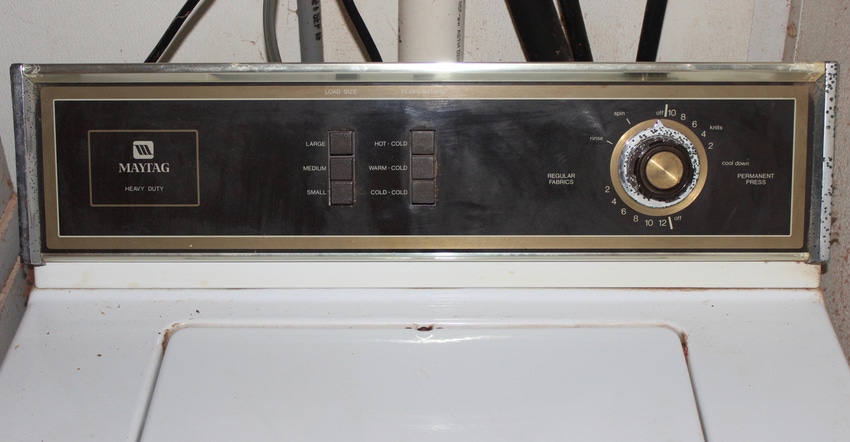
Considering the problems in the world, having your washing machine lock your underwear inside is not particularly traumatic. But it is extremely inconvenient. And the fact that the washing machine involved had been in my basement for only two years and 37 days made the situation even more annoying.
Washed up
While the washer’s troubleshooting guide covers gurgling, whirring and metallic clicking, it does not address undergarment hostage situations. My first guess was that the lid lock itself was malfunctioning, but my in-house repair staff (husband) concluded the problem was likely in the main control panel. That suspicion was confirmed by a helpful appliance repairman, who also diagnosed “possible shifter issues” and charged me $96.25. Fixing those problems would cost more than $500 in parts and labor, so he recommended buying a new machine instead.
Meanwhile, in my pig barn, I have a Maytag built in 1988 that I bought 13 years ago at a farm auction for $25. It works great to wash coveralls and towels. I’ve bought a couple other old washers at auctions, and they are still running, too. My daughter is using one of them, and a neighbor has the other. Unfortunately, I haven’t been to any auctions lately, so I didn’t have an old, reliable machine on standby when my washer died.
The longevity of those old machines proves it’s possible to build washing machines that last. My recently departed machine, on the other hand, was designed to last only about eight years, according to my helpful repairman. And he’s been seeing a lot of machines fail well before that. They’re not designed for economical repairs, either, so people often end up replacing machines rather than repairing them.
Safety in, longevity out
Over the last 30 years, washing machines have become more complex to meet government efficiency and safety standards — but I’m not convinced they are actually more efficient or safer when shorter machine life cycles are factored in. It seems to me that a machine that lasts 32 years would use a quarter of the materials and energy for manufacturing than four machines, each with an eight-year life span. Add to that the environmental costs of disposing of three extra machines, plus the time and travel expenses for a customer to drive around shopping for new machines.
Older machines shut off when the lids are opened, but that was apparently not enough to keep some people from causing themselves bodily injury by reaching into moving washtubs. Newer machines with locks might eliminate that danger, but they increase the danger of injury from attempts to pry open locked lids with screwdrivers. Also, repeatedly hauling malfunctioning machines up narrow basement stairways dramatically increases the risk of back injuries and smashed fingers.
If I could, I’d buy another machine like the one in my pig barn, but my laundry pile grows too quickly to wait for one to come up at auction. The helpful repairman gave me some suggestions on what to look for in a new machine, particularly a mounted washtub rather than a suspended one.
I’m hopeful this new machine will be the last one we ever haul into our basement, but I’m going to be scanning auction ads just in case.
Keck writes from Raymond, Ohio.
About the Author(s)
You May Also Like




